Rule-based Art
Medium = System = Rules = Constraints = Means to Act
Every medium presents a rigid, physical and technological system that the artist must work within.
For instance, painting is a system and a technology. There are rules and constraints that a painter must follow. A painter often uses a brush with a special pigmented material and applies it to a paint surface. A brush is an implement with a handle and bristles that allow transferring paint easily to the canvas (technology!). The canvas is a special fabric with a texture allowing it to receive and hold paint in a controlled manner (also technology!).
Sculpture, music, photography, video and other mediums of artmaking all use technologies that come with inherent constraints. Within those constraints, artists can create an infinitely broad range of things.
So in a sense, creativity always happens within a limited system. But what if we created our own systems as a way to make things on their own? I argue that the creative programmer specializes in just that.
Beginning with Modernism some artists began to create their own conceptual systems or rules to dictate their artwork explicitly, and experimenting with removing their own choice from the process. The rules make the choices instead! We are going to look at examples of this slice of pre-computer 20th century art. In the realm of creative coding, we are creating systems all the time(our programs), so we can take inspiration from some of these strange and ingenious systems when writing our programs going forward:
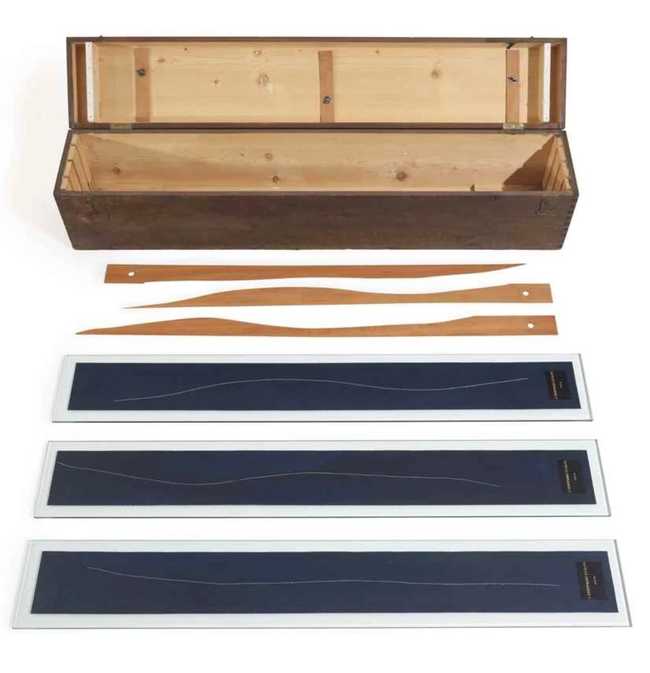
Marcel Duchamp
In this work, Duchamp created 3 strange "rulers". He started by dropping a 1 meter string over a canvas on the floor 3 times. Each time, the string landed a little bit differently. He then traced the string and carved molds of their shapes into wood (seen at top). He used the curved wood pieces to create "permanent copies" of the strings as they hit the canvas (black object in image). Thus, Duchamp created a system of steps (or algorithm), and followed it three times to produce the work.
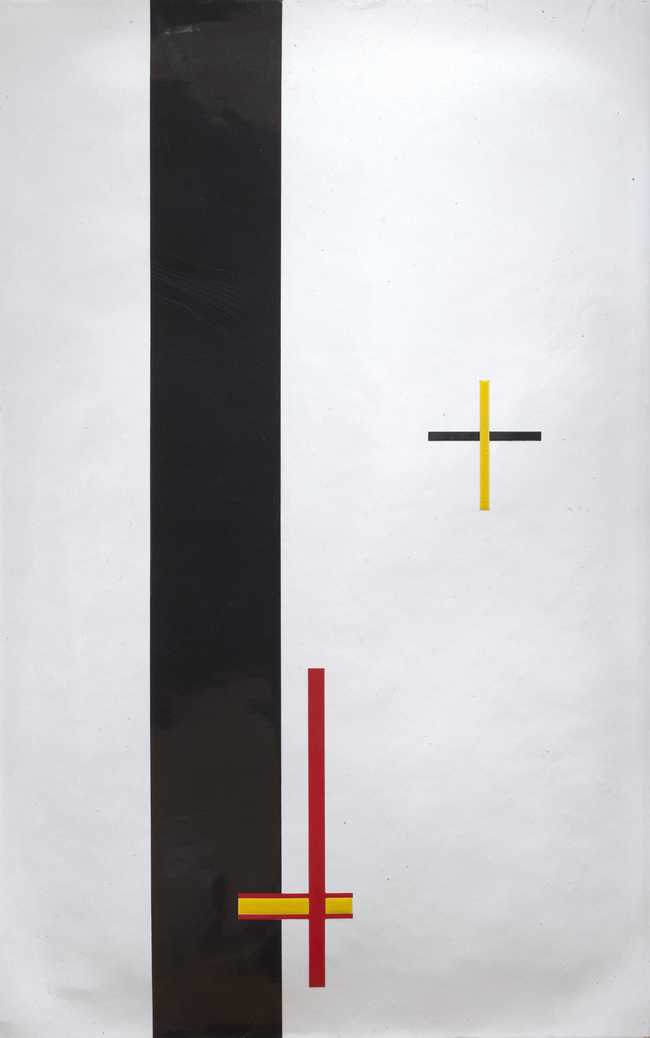
László Moholy-Nagy
From the MOMA website:
These works were produced by an enamel factory in Weimar, Germany, according to instructions given by the artist. Moholy-Nagy later wrote that he placed the order by telephone... By rejecting unique, handmade artwork in favor of serial mechanical production in his “telephone pictures,” Moholy-Nagy emphasized the role of the modern artist as a producer of concepts rather than a craftsman physically involved in the making of the work.
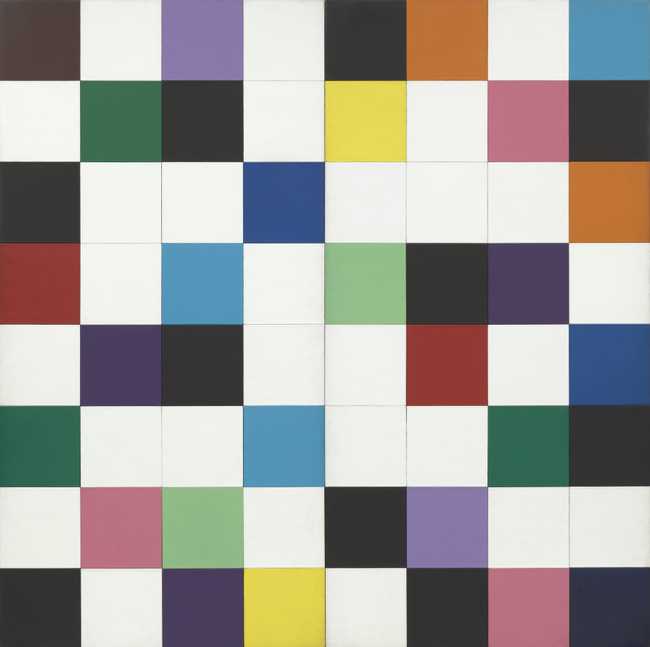
Ellsworth Kelly
From the MOMA website:
At the time of its production in 1951, Colors for a Large Wall was the largest painting Kelly had ever made. It brings together four strategies fundamental to modernism: the additive composition of similar elements (each square is painted separately), the use of chance (each square is arranged randomly), the idea of the readymade (each color was taken from the French craft paper Kelly used to produce the collage on which the painting is based), and the allover grid of its composition. The result is a painting in which no aspect of its appearance has been determined by the artist’s personal choices.

François Morellet
From the MOMA website:
To create Random Distribution of 40,000 Squares Using the Odd and Even Numbers of a Telephone Directory he used data from a telephone book as source material. After he divided the canvas into 40,000 squares, his wife or his sons read the numbers from the phone book out loud, while he moved across the canvas, marking a square for each even number and skipping a square for each odd one. He then colored the marked squares blue and the blank ones red.

Vito Acconci
From the MOMA website:
In the fall of 1969, Acconci randomly selected and then followed individual passersby he encountered in New York City, maintaining his pursuit until the person entered a building. The process varied in length from a few minutes to several hours and took the artist around Manhattan and into Brooklyn, Queens, and the Bronx, as shown in the work’s central map. Though this stalking was aggressive, by allowing a stranger to determine his route the artist gave up a certain degree of agency. He said, “I am almost not an ‘I’ anymore; I put myself in the service of this scheme.” A typescript lays out the terms of the “scheme,” and this photocollage documents several of the actions.
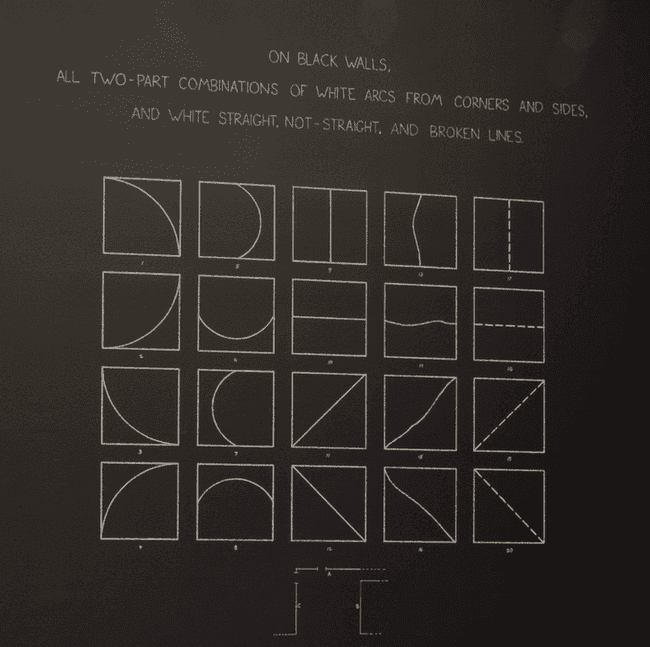
Sol Lewitt
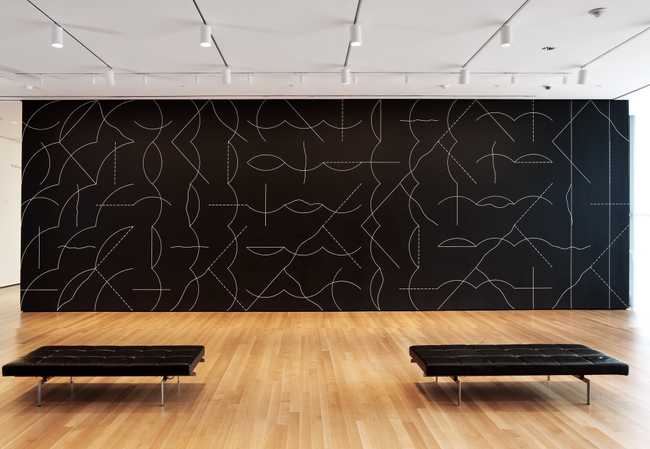
Sol Lewitt
Sol Lewitt made many wall drawings where his instructions were carried out by other people. Similar to writing programs, isn't it!
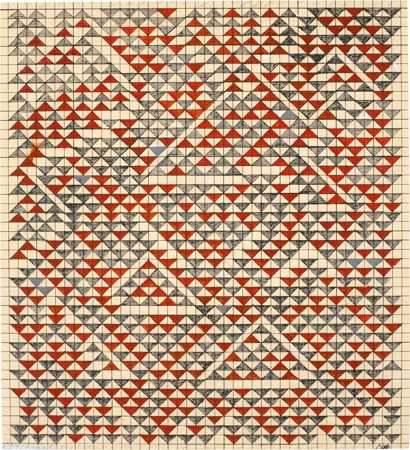
Anni Albers
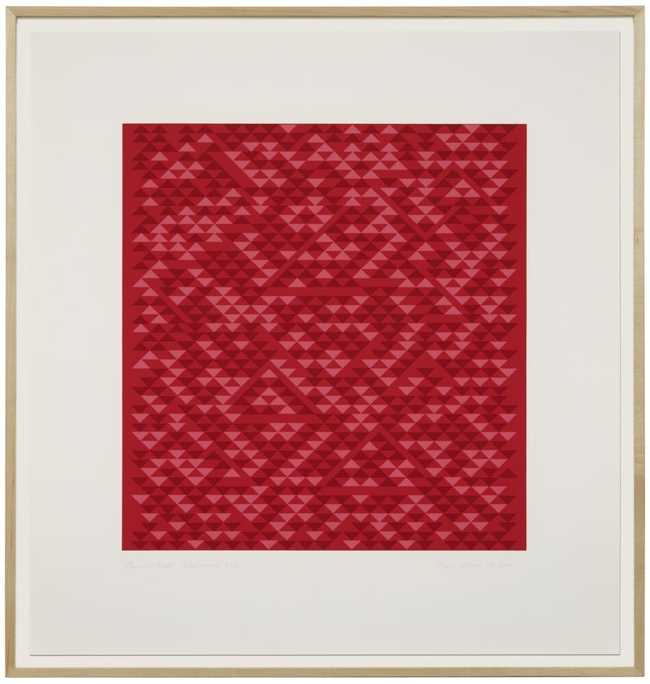
Anni Albers
Working within the technical, gridded requirements of textile weaving, Anni Albers made patterns that went with- and against- the grain of the medium.
With computers... rules are the new paintbrush!
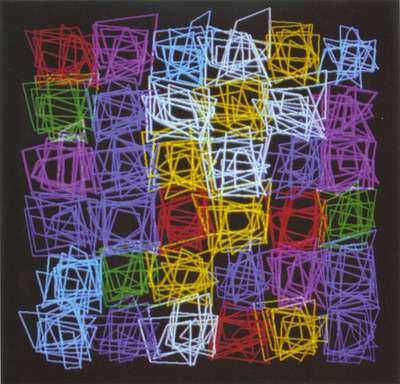
Vera Molnár
Vera Molnár made this on a computer in 1986. What rules do you think she used to make this image?
When we are using computers to make things, we must remember that computers understand systems and we can use similar strategies to the ones above find creative possibilities.
